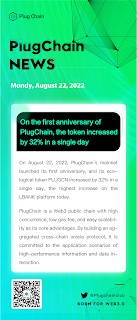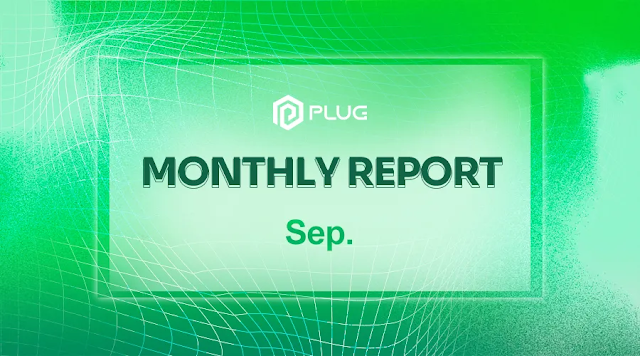Solution to PlugChain's Breakthrough: AI+Oracle=Metaverse
Introduction: At the end of March, Musk and scientists from the Future of Life Institute signed an open letter calling for a halt to the development of advanced AI systems. Musk has long warned that people should be cautious when facing artificial intelligence, and he is joined by physicist giant Hawking. Hawking predicted in 2014 that “artificial intelligence could end humanity.”
With the application of large-scale language models, one can not help but worry whether sci-fi stories like “Black Mirror” are just the creators’ groundless fears or nightmares that will come true.
Moravec’s paradox, a famous paradox in the field of artificial intelligence, refers to the fact that AI can produce excellent results in areas where humans are not good at, such as complex mathematical operations, but can not easily perform tasks that humans can easily accomplish, such as going out to buy groceries or tidying up a room.
In recent years, “weak AI” that focuses on solving single tasks has made some progress, including playing chess, mastering knowledge, and identifying medical conditions. This year, generative AI has exploded, although it has not yet reached the level of the “strong AI” or artificial general intelligence (AGI) that is an all-rounder, it has already made people very excited.
Similarly, the hot concept of AI has also spread to blockchain technology. Or, to be more precise, at the beginning, AI set its sights on the blockchain field!
• Oracle+AI: Unleashing the “Value” of Data
Currently, with the continuous development of blockchain technology, the oracle has become an indispensable part of the blockchain ecosystem. The oracle is a technology that can input data from the real world into blockchain. It can ensure that blockchain applications obtain accurate and real-time data, thereby expanding the application scenarios of blockchain.
However, the shortcomings of the oracle itself also limit its development in the blockchain ecosystem. At this time, the emergence of artificial intelligence (AI) technology provides new development opportunities for oracles. Obviously, the combination of oracles and AI will trigger a new technological revolution.
Firstly, AI can provide more efficient and accurate data analysis for oracles. AI technology can classify, filter, and analyze a large amount of data and process and model the data to better provide data for oracles. AI can also automate the process of data collection and processing, reducing the cost and time of manual intervention. In this way, oracles can obtain more accurate and real-time data from a wider range of data sources and provide data to blockchain applications at a faster speed.
Secondly, the combination of oracles and AI can expand the application scenarios of blockchain applications. Since oracles can obtain data from the real world, they can be used in many fields, such as supply chain management, finance, and healthcare. By using AI technology, oracles can better process and model the data in these fields, providing higher-quality data for applications and expanding the application scenarios.
Finally, the combination of oracles and AI can also provide a more efficient and secure data verification mechanism. Data verification in blockchain applications is an important task that usually requires multiple nodes to verify the data. Using AI technology, oracles can analyze and model the data and judge the verification results to improve the efficiency of data verification. In addition, AI can also provide a more secure data verification mechanism by identifying potential data tampering and fraudulent behavior through machine learning and model prediction technology.
Overall, oracles provide a channel for data to move from Web 2.0 to Web 3.0, and the technology of AI makes the application scenarios of data more extensive. Therefore, oracles and AI will play an increasingly important role in the development of the blockchain ecosystem.
• Oracle: The “Cradle” of Blockchain Data
The concept of AI may be familiar to everyone, and there are also many mature products on the market, such as the previously famous AlphaGo and the currently popular ChatGPT. However, people’s understanding of language machines seems to be very limited, and some may ask what exactly is an oracle?
As its name suggests, an oracle is not a prediction tool, but a “bridge” that maintains data and information communication between blockchain networks, the Internet, and other blockchain networks. Especially in decentralized applications (DApps) such as DeFi smart contracts, developers can use oracles to call various external data resources, including market prices, to connect DApps to the external real-world data environment.
The reliable support for the price feeding function or data source that we encounter in our daily lives is only in its early stages. In the long run, the oracle will serve as a collection of various elements such as real-world data, information, credit, and assets. It provides the correctness of data or information, the decentralization level of technical implementation, and the intelligence level of module scripts. It can also be combined with multiple blockchain fields, acting as a material that can be used to build credit with DID, combined with stablecoins to ensure the value match between stablecoins and the US dollar at the current exchange rate, and combined with insurance to ensure the accuracy of claims information, etc.
Therefore, the oracle is almost the data cradle of all DeFi protocols and an indispensable part of the blockchain field.
So how does an oracle work?
First, an oracle generally interacts with the execution engine as an independent module of the blockchain or a third-party service. The oracle is only responsible for obtaining trustworthy data and does not directly participate in the execution of transactions. Users initiate oracle service requests through contract calls (or other methods such as special API interface services), informing the blockchain execution engine that they want to execute a transaction that includes an oracle service by calling a certain built-in contract interface.
Second, during the execution of the execution engine, when a service request to the oracle is detected, it is forwarded to the oracle module through an internal communication component. This request will contain some information about requesting external data sources, such as a web data request, which will include common information such as URL and HTTP headers.
Third, after receiving the service request, the oracle initiates a data acquisition request to the external data source, obtains the data, uses a transaction generator to generate a new internal callback transaction, and signs it (this process will use hardware technologies such as TEE to ensure security and immutability).
Finally, the oracle sends this callback transaction to the execution engine, which performs a series of operations such as organizing, managing, and storing the obtained data. This completes the entire process of executing a blockchain transaction that includes an oracle service.
• PlugChain Takes the Lead in the Race
With the rise of DeFi, the popularity of oracle has also been ignited. In this field, Chainlink, PlugChain, NEST, Augur and others have emerged successively, providing more diversified options for DeFi projects. Among them, Chainlink and PlugChain both uphold the decentralized principles of blockchain for their decentralized oracles. They usually use multi-signature or distributed algorithms to ensure data accuracy and consistency without introducing third-party institutions, but this approach is more difficult to implement and performance may become a bottleneck.
As a PlugChain , it has established a decentralized data network, where each oracle is a node in the network, and its architecture is divided into on-chain components and off-chain components. The on-chain components are responsible for interacting with users, collecting and responding to user requests, while the off-chain components are the aforementioned data network, used for processing data acquisition and transmission, greatly improving the efficiency of on-chain data processing.
In addition, the on-chain AI system is an important component of the PlugChain oracle network. By using AI algorithms and data analysis technology, PlugChain can automate the execution of smart contracts, as well as predict and analyze data and market trends.
These predictions and analyses can be converted into real-time market data and used to support various applications and services in the PlugChain ecosystem. For example, AI technology can be used to establish automated trading strategies and trading robots, providing efficient trading and investment support for users. At the same time, the more efficient and intelligent interaction of on-chain data makes it possible to combine AI with oracle to create a Metaverse.
Based on AI and oracle technology, once PlugChain constructs a decentralized Metaverse, the ecosystem will support various applications and services, covering GameFi, SocialFi, DeFi, Swap, DEX, DAO and many other application scenarios. Users can trade in Metaverse using “value data” and “cryptocurrency”, thereby realizing asset appreciation and data trading income.
Obviously, among the many oracle contenders, PlugChain, with the support of on-chain AI, has opened up a new path and is ready to catch up with the oracle leader, Chainlink!
In conclusion:it is not difficult to foresee that interacting with the outside world will be the next logical step for oracle. From a technical point of view, Oracle solves the problem of trusted data connectivity inside and outside the blockchain, but there is still the issue of “how to use” data. The emergence of AI is like a data service provider, endowing Web3’s data with liquidity and truly releasing its value, completely solving the problem of “where to use” data.
In the future, as the scale of blockchain in the financial, insurance, and IoT industries expands, the ecological value of AI+oracle is even more worth looking forward to!







Comments
Post a Comment